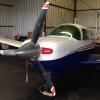Jack it up
-
Members Online
- Ragsf15e
- Hank
- nrgries
- toto
- ProtoFly
- Sue Bon
- milotron
- PT20J
- 1980Mooney
- bcg
- Schllc
- Niko182.
- rahill
- Dwb62
- tbone40x
- wombat
- bhtitle
- Rwsavory
- Danb
- lanejacobs84
- PhateX1337
- JBear
- Ivan
- ThespinDotor
- 00-Negative
- redbaron1982
- Nico1
- jdcaflyer
- devyn6seven
- Fly Boomer
- natdm
- Darwyn
- Rizvon
- NewMoon
- eman1200
- Crawfish
- ta2too
- Surefly
- richardbrochu27
- Brian2034
- Griswold
- DonMuncy


Recommended Posts
Join the conversation
You can post now and register later. If you have an account, sign in now to post with your account.